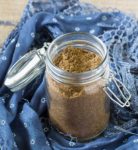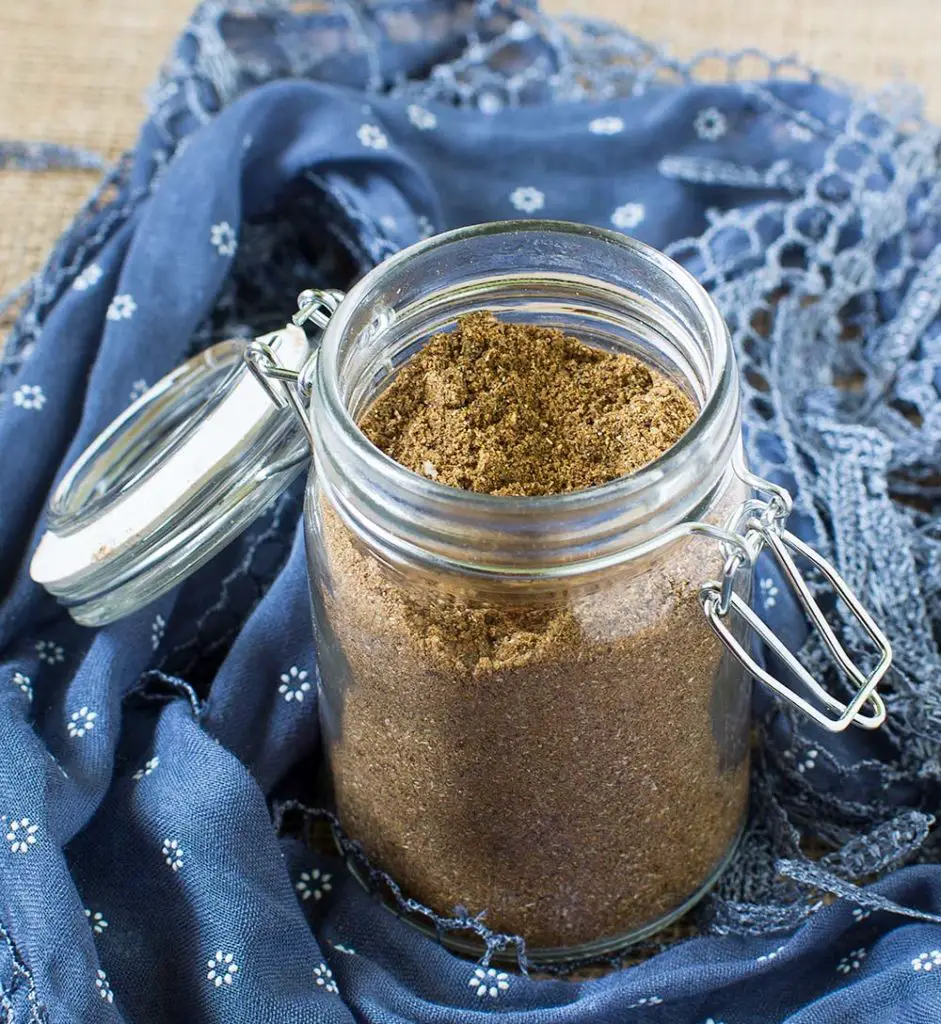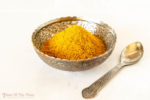This post may contain affiliate links. That means if you click on a link and make a purchase, I may make a small commission at no additional cost to you. Thank you for your support!
Thanks to BBC Maestro for providing me with a free online cooking class to help me write this post! Although I received a free product in exchange for this post, all opinions are my own.
Are you ready to add some delicious flavor to your cooking? Look no further than garam masala! This amazing Indian spice blend can really take your dishes to the next level with its warm and deep flavors. The great thing is that it’s easy to make exceptionally fresh and fragrant garam masala at home if you have access to a handful of quality spices. In this article, I’ll share what I’ve learned about garam masala – including its history, what you can use as a substitute, and a traditional recipe for making it yourself. Get ready to take your taste buds on a culinary adventure!
What is Garam Masala?
Garam masala is a fragrant Indian spice blend typically made with coriander seed, cumin seed, green cardamom pods, black peppercorn, cinnamon, cloves, and other spices, which are toasted and then ground to a fine powder. The resulting blend has a rich aroma and a warming and slightly sweet flavor profile.
History and Origins of Garam Masala
The origins of garam masala can be traced back to ancient times in India. The exact history of its creation is unclear, but it is believed to have originated in the northern regions of the country. Garam masala has been used as a digestive aid and is valued for its ability to warm the body during the cold winter months. Over time, it has become a staple in Indian cuisine and is now an integral part of many dishes.
The Ingredients of Garam Masala
Garam masala typically consists of a combination of spices, each contributing its unique flavor and aroma. The key ingredients include coriander seeds, cumin, green cardamom, black peppercorn, cinnamon, and cloves. Some variations of garam masala may also include additional spices such as nutmeg, mace, bay leaves, or fennel seeds. Each spice is carefully selected to create a harmonious blend that enhances the overall taste of a dish.
Garam Masala Substitutes
If you don’t have garam masala on hand or prefer a different flavor profile, there are several substitutes you can use. One option is to replace garam masala with curry powder, although the flavors will be slightly different. Alternatively, you can create a simple garam masala substitute by combining just a few of the individual spices that you happen to have on hand. For a very basic substitute, combine 4 parts cumin with 1 part allspice.
Is Garam Masala Spicy?
Contrary to its name, garam masala is not necessarily spicy in terms of heat. While some variations may have a slight kick, the overall flavor profile of garam masala is more about warmth and complexity rather than spiciness. The spices in garam masala lend depth and richness to dishes without overpowering them with heat. However, it’s important to note that individual spice blends may vary, so it’s always a good idea to taste and adjust the amount of garam masala according to your spice tolerance.
Garam Masala vs Curry Powder: What’s the Difference?
Garam masala and curry powder are both spice blends commonly used in Indian cuisine, but they have distinct differences in flavor and usage. Garam masala typically does not contain turmeric, while curry powder typically does. Garam masala is generally used as more of a finishing spice blend, added at the end of cooking to enhance the flavors of a dish, while curry powder is often used as a primary seasoning added to the dish earlier in the cooking process. Another difference is that garam masala is generally a blend of warm spices, while curry powder is sometimes very spicy.
Wanna know more about the differences between curry powder and garam masala? I wrote a whole article about it over at Curry Powder vs Garam Masala – What’s The Difference? Or if it’s curry powder that’s got your interest, check out my post all about it at What Is Curry Powder – Quick Guide + Recipe Suggestions.
Popular Dishes that Use Garam Masala
Garam masala is a versatile spice blend that is used in a wide range of Indian dishes. It adds depth and complexity to veggies, stews, rice dishes, and more. Some popular dishes that typically feature garam masala include butter chicken, chana masala (a veggie stew made with chickpeas), and tawa paneer (a spiced paneer cheese and tomato dish). The aromatic flavors of garam masala complement both vegetarian and non-vegetarian dishes, making it a staple in Indian kitchens.
How to Make Garam Masala at Home
Making garam masala at home allows you to customize the blend to your liking and ensures the freshness of the spices. To make your own garam masala, start by carefully toasting the whole spices in a dry pan over medium heat until fragrant. But be careful! Delicate spices are easy to burn! This process helps release the essential oils and intensify the flavors. Once toasted, let the spices cool and then grind them into a fine powder using a spice grinder or mortar and pestle. Store the homemade garam masala in an airtight container away from direct sunlight to preserve its flavors. It should remain fresh for several months.
Tips for using Garam Masala
To get the most out of your garam masala, consider the following tips:
- Toast the spices: If you are making your own garam masala, toasting the whole spices before grinding them enhances their flavors and aromas. Take the extra step of toasting for a more intense garam masala experience.
- Use it sparingly: Garam masala is potent, so start with a small amount and add more if needed.
- Store it properly: To keep your garam masala fresher longer, store it in an airtight container away from heat, light, and moisture. In other words, don’t store it in a spice rack above your stovetop.
Garam masala is a cornerstone of Indian cooking, providing warmth, depth, and complexity to dishes. Add a sprinkle of garam masala to your next dish and experience the magic it brings to your taste buds. Yumm!
Print
Garam masala
- Total Time: 10 minutes
- Yield: About 4 ounces 1x
Description
Are you ready to add some delicious flavor to your cooking? Look no further than garam masala! This amazing Indian spice blend can really take your dishes to the next level with its warm and deep flavors. The great thing is that it’s easy to make exceptionally fresh and fragrant garam masala at home if you have access to a handful of quality spices.
This recipe originally comes from Prachi Grover of Orange Kitchens, who graciously shared her own mother’s version of garam masala for the Taste Of The Place cookbook. I’ve modified the recipe slightly by first toasting the spices and reducing the volume.
Ingredients
- 4 tablespoons whole cumin seeds
- 2 tablespoons + 2 teaspoons black cardamom pods (see notes)
- 2 tablespoons + 2 teaspoons whole black peppercorns
- 2 tablespoons green cardamom pods
- 2 tablespoons whole coriander seeds
- 2 tablespoons whole fennel seeds
- 1 tablespoon whole cloves
- 6 bay leaves
- 10 (2-inch long) cinnamon sticks
- 1 1/2 teaspoon ground ginger
- 1/2 a whole nutmeg, grated
Instructions
- Place a medium-sized, dry skillet over medium heat. Add the cumin, black cardamom pods, black peppercorns, green cardamom pods, coriander seeds, fennel seeds, cloves, bay leaves, and cinnamon sticks to the skillet while it warms. Stirring constantly, toast the spices until they become fragrant, just a couple of minutes. Keep a careful eye on things! Spices can go from toasty and fragrant to burned and bitter very quickly. Transfer the spices to a bowl or plate to allow them to cool slightly.
- Once the spices have cooled to the touch, grind them to a fine powder with a mortar and pestle or spice grinder. You may need to break the cinnamon into smaller chunks by hand before grinding in a spice grinder.
- Stir in the ground ginger and grated nutmeg.
- Transfer to a dry airtight container.
- Sprinkle it over your favorite Indian dishes or anywhere a warm spice blend would be a yummy addition.
- Your fresh garam masala will keep for several months before it begins to lose its fragrance and flavor.
Notes
Black cardamom, while related to green cardamom, has a distinct smoky aroma and flavor. It can be challenging to find. If you can’t find any, rather than adding more green cardamom, simply omit it from the recipe. Your garam masala will still be delicious!
Garam masala is potent, so start with a small amount and add more if needed.
To keep your garam masala fresher longer, store it in an airtight container away from heat, light, and moisture. In other words, don’t store it in a spice rack above your stovetop.
Would you like to learn more about Indian spices in general? Hop over to my Guide To The 15 Most Common Indian Spices post and start your reading!
- Cook Time: 10 minutes
- Category: spices
- Cuisine: Indian
Other resources
I’ve been on a journey to learn more about Indian food recently by enrolling in an online cooking class through BBC Maestro. The course not only covers how to make and use garam masala but includes highly instructive videos on a whole range of Indian recipes from onion bhaji to mango lassi. If you are interested in learning more yourself, hop over to the BBC Maestro Modern Indian Cooking course and check it out!
Don’t want to make your own garam masala? Grab yourself a premium jar from my favorite spice merchant, Savory Spice Shop…
 Buy Now →
Buy Now → 













Leave a Reply